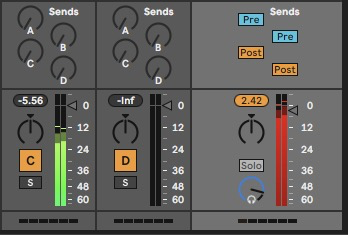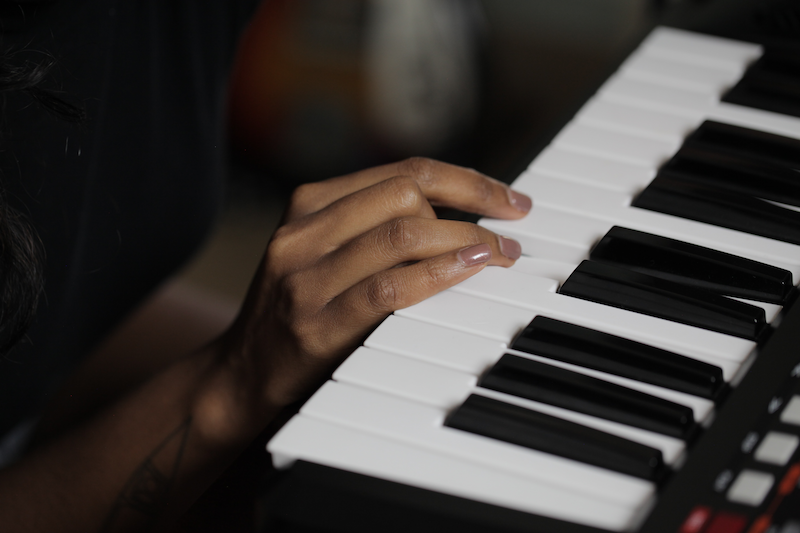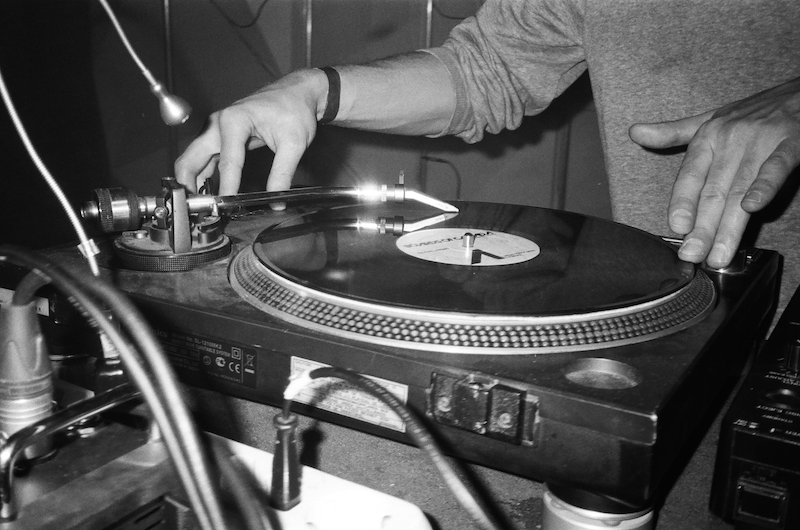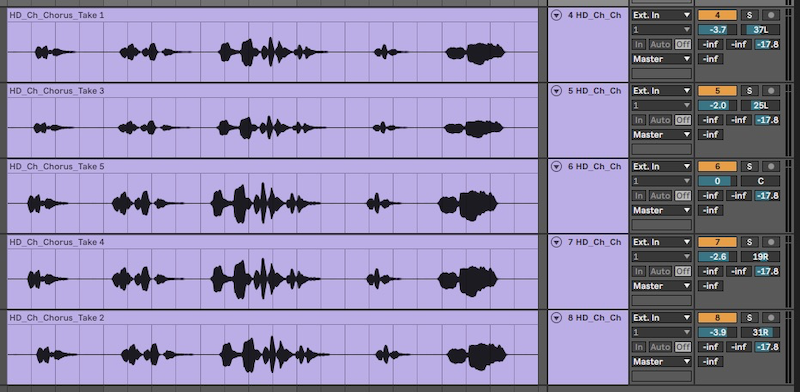Blog
6 Times Producers Broke the Rules but Ended Up Top of Class
26 Jan '2024
Discover unconventional ways to be creative in music production and learn the lesson of rule-breaking with the renegade producers, DJs and musicians who changed the way things were done.

While learning music production, you’re bound to encounter an awful lot of dogma about the “right” way of doing things. Whether you’re learning from tutorials, listening to advice from artists, or reading about a new plugin, it often feels like there’s only one way that things should and must be done. Keep your bass mono, don’t clip the master, don’t let the bass get too loud – the list goes on and on.

But it’s also said that rules are made to be broken, although this is a notion that we maybe don’t get reminded of often enough. True originality springs from those who make their own path. So with that in mind, we’ve compiled a list of times that an artist or producer did something they weren’t supposed to and ended up rewriting the entire rulebook by doing so.
1. Imogen Heap Going Acapella on Hide and Seek
Humans like to sing. So much so, many believe that singing actually predates communicating through spoken language as we know it today, meaning that acapellas are clearly not a new concept. What is innovative about Imogen Heap’s discarding of all other musical elements in her 2005 track “Hide and Seek”, is that it was relatively uncharted territory within the spheres of pop and electropop at the time.
Owing to a computer malfunction, a frustrated Heap was eager to make something of her studio session, so she looked to a DigiTech Vocalist Workstation that she’d borrowed from a friend and hadn’t yet gotten round to using. The device harmonised her voice according to the MIDI she fed it, with up to a maximum of four notes of polyphony.

What resulted was an extremely intimate and moving composition where all ears are forced onto the vocal, given it’s the only element present. The emotion conveyed in the vocal performance and production have made it a popular choice amongst other producers looking for a stirring sample, as well as in sync for TV and film. Most notably, the song was sampled for the hook in Jason Derulo’s “Whatcha Say”, and used in TV shows The O.C. and Normal People.
If you’re interested in experimenting with creating harmonies and innovative vocal production, a great place to start is with a bank of high-quality vocal loops and samples.
2. Wiley Abandoning Drums in his Devil’s Mix Series
In the same vein as the first example, our second entry on this list involves an artist who tore up the rule book by abolishing parts of a production that would be otherwise deemed as essential. The so-called Godfather of Grime, Wiley, removed drums completely from some of his most popular tracks in his Devil’s Mix remix series.
This omission of drum parts was intended to create more room in the mix, and give MCs more control over the energy and flow of a track during radio or club performances. Ultimately, the effect of removing the drums left audiences totally engaged, yearning for the impact that they usually bring. This effect was even more enhanced with tracks such as “Eskimo 2”, where the crowd were expecting to hear the beat they were familiar with from the well-known original version.

This innovative move opened up a new world of possibilities for many grime producers at the time, who began to experiment with more minimalistic, drum-less productions. Wiley’s Devil’s Mix series arguably catalysed the “Weightless” sub-genre of grime, which is characterised by more melodies and less drums than traditional grime.
If you want to keep things conventional and make grime music with hard-hitting and impactful drums, you’ll need some solid samples to get the job done, and Loopcloud is on hand to provide you with the goods.
3. Fred Again Keeping it Simple with an iPhone
It’s not just production techniques that are subject to supposed hard-and-fast rules, though. All too often we’re told we need big budget equipment to create high-quality, radio-ready music. Dance music phenomenon Fred Again is one artist who hasn’t succumbed to this pressure, and has explained that much of his own productions contain vocals that are recorded on his iPhone, sent over Whatsapp, or extracted from videos he’s taken on his travels.
Using voice memo recordings allows Fred Again to convey a real sense of immersion and individuality within his music, which lends itself to the storytelling nature of much of his work, particularly his Actual Life projects. Not only that, but the successful producer opts to spend most of his time producing with Apple wired earbuds.

This decision to keep things simple on the gear front allows him to focus on the music itself, and is a testament to how expensive equipment isn’t necessarily essential for writing and producing great music.
We caught up with Fred Again collaborator Flowdan earlier this year to discuss the making of their track “Rumble” amongst other things.
4. T-Pain Changes the Game with Auto-Tune (with inspiration from J-Lo and Cher)
The earliest example of the infamous Auto-Tune technique wasn’t exactly the most prominent, but it set in motion a chain of events that led to it becoming a signature sound in hip hop. In 1996, Dr Andy Hildebrand unveiled Antares’ Auto-Tune plugin, designed to automatically correct the pitch of a vocal performance in a natural and musical way. The groundbreaking software didn’t become commercially available until 1997, and it wasn’t long before innovative artists were seeking ways to use and abuse the software.
Just one year after Auto-Tune’s release, Cher released the iconic vocal-trance hit “Believe”, a which makes use of the software with the speed turned to zero, or full speed. This resulted in a slightly unnatural effect that was previously unheard. In 1999, Dark Child’s remix of J-Lo’s “If You Had My Love” made similar use of Auto-Tune, setting the precedent for the all-out digital vocal auto-tuning that was to follow.
And follow it did, in the form of Florida hip hop trailblazer T-Pain, whose 2005 track I’m Sprung stands out as an example of a vocal that was auto-tuned into a new dimension, with none of the realism Hildebrand had originally envisaged. It was from here on out that auto-tuned vocals became popularised in the worlds of hip hop and RnB, with frequent users of the technique including Kanye West, Nicki Minaj, Travis Scott and more.
Auto-Tune or not, if you’re a hip hop producer, why not check out this list of the Top 10 Best Hip Hop Samples, Loops and Sound Packs on Loopcloud today.
5. Billie Eilish and Finneas Ignoring Production Norms
We could conduct an entire study that explores the rule-breaking in Billie Eilish and her brother Finneas’ productions, but we’ll focus on one aspect of the duo’s innovative approach to music-making. One such example of ingenuity to the point of anarchy, is the unique way in which Billie Eilish delivers many of her vocals, along with the way they’re produced by Finneas.
Traditionally, pop music vocals are delivered and mixed to be clear, loud, full and transparent, so that they can take precedence within the overall mix. In the case of the above track, and many others by the brother-sister super-duo, Eilish’s vocals sit somewhere between a whisper and spoken word. Unlike in Bjork’s “It’s Oh So Quiet”, this isn’t purely to create contrast between the sections of the composition. According to Eilish herself, it’s to make the performance more personal and place it closer to the listener.

Despite being practically whispered, Finneas is still able to make his sister’s vocals sound like the biggest thing in the mix. This is achieved using extreme layering and panning of vocals, harmonisation, and distortion through plugins like Soundtoys’ Little Alter Boy.
If you want to work with more vocals in your productions, but you’re not related to a Grammy Award-winning singer, take a look at this thorough guide on using Loopcloud for vocals.
6. DJ Kool Herc Mixing Two Identical Records and Essentially Inventing Hip Hop
Our last example of musical mischief that turned out to be a breakthrough, comes courtesy of DJ Kool Herc. While DJing at a house party back in 1973 (half a century ago at this stage!), the Jamaican-American pioneer hip hop pioneer figured out that playing two of the same records would allow him to essentially loop the break indefinitely. This created more room for rappers to deliver their bars, kind of like Wiley’s Devils Mix concept but in reverse.
While this is technically more of a DJing technique than a production technique, it was a staggeringly impactful moment of inventiveness that laid the foundation for a large part of what we’ve heard in hip hop production since. While much of the early evolution happened exclusively at live performances, artists like The Sugarhill Gang eventually planted their flag in releases that adopted this new style of music.
You can read more about DJ Kool Herc’s contribution to the genre in our article which looks at fifty years of hip hop, decade by decade.
FAQs
Who are some producers who broke the rules in music?
There are many music producers who made a habit of colouring outside the lines in their tracks, but some of the most notable include:
- Cher
- T-Pain
- Billie Eilish
- Finneas
- Burial
- Wiley
- Imogen Heap
- DJ Kool Herc
- Bjork
- Aphex Twin
- Goldie
What are three responsibilities of a music producer?
Three of the main responsibilities of a music producer include:
- Plan and organise recording sessions with artists, engineers and other producers.
- Come up with new ideas for projects, concepts, themes, instrumentation, lyrics and effects.
- Oversee the overall production of a project, including giving direction to artists, mix engineers and mastering engineers.

